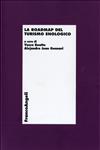
Analysis of data drawn from Agriculture and Industry Censuses highlights the fragmentation that still characterizes the winemaking supply chain in all its phases. This fragmentation has obvious consequences for the grape and wine supply markets, which are further exacerbated by the large number of varieties and territorial designations available in Italy today. Next, the analysis focuses on the flow of grapes annually processed by winemakers. Based on grape harvest and wine production data (for 2012), that winegrowers and wine-makers must compulsorily declare, grapes flows within the supply chain are estimated in order to assess the importance of the various (agricultural and non-agricultural) actors in the winemaking industry. The analysis suggests that the roles played by the various categories of players in the supply chain depend contextually on the territories where they operate and on the quality of the wines. This implies the existence of different wine supply-chain models in Italy. Finally, the paper analyses the wine grape markets, distinguishing between ‘external’and ‘internal’markets. In ‘external’markets (sales of grapes to wine-makers by farmers or to cooperatives by non-members), prices depend on the contractual relationships between individual operators (private contracts) or, alternately, on collective agreements between producers and wine-makers. These markets today are very strong in the low quality grapes sector and in grapes processed by industrial wine makers. On the other hand, in ‘internal’markets (on-farm winemaking or provision to cooperatives by members), the price of grapes is implicit and depends on the degree of value added by the wine makers. These markets play a primary role in the high quality wine sector: territorial brand wines and so on. As a result, spot markets for wine grapes are thin on the ground. Spot prices for grapes are still collected and published weekly during the harvest season by various organizations, but today they do not really have the same significance as in the past. Prices are quantified as a purely formal act, often influenced by vested interests. The buyers’ effective willingness to pay is to a large extent only known by traders, and is linked to production strategies adopted by the winemakers.



